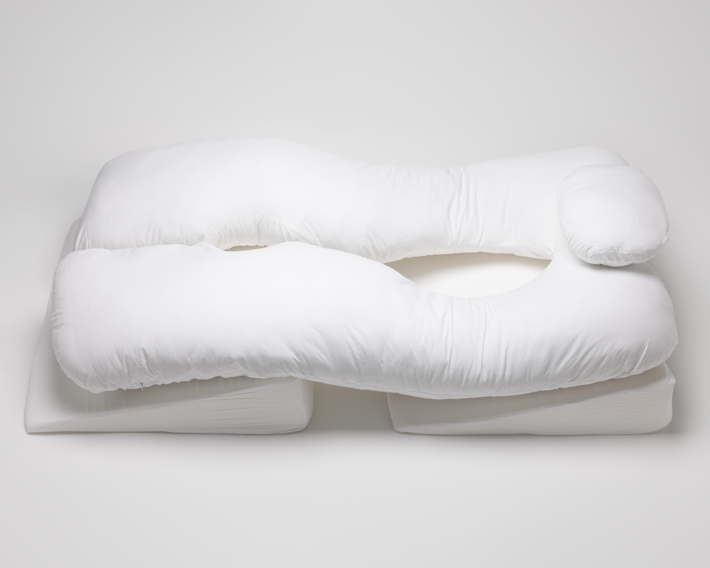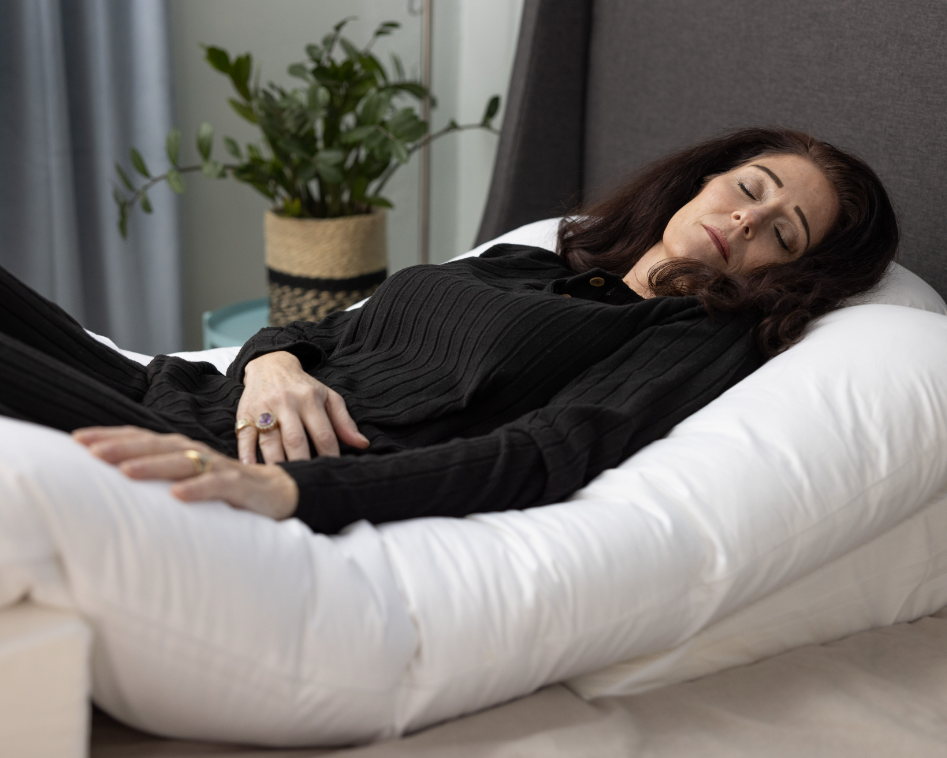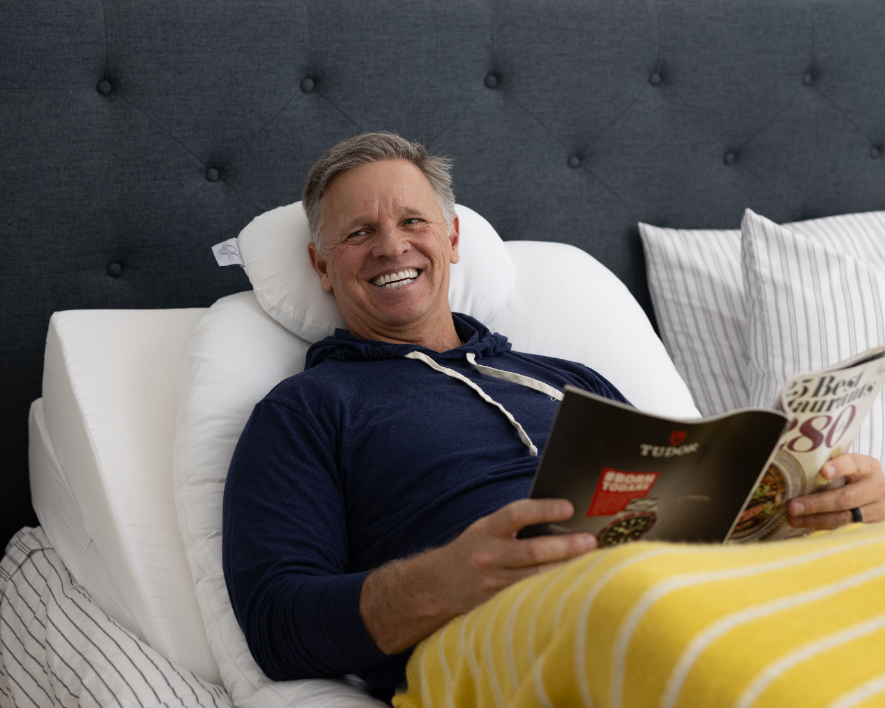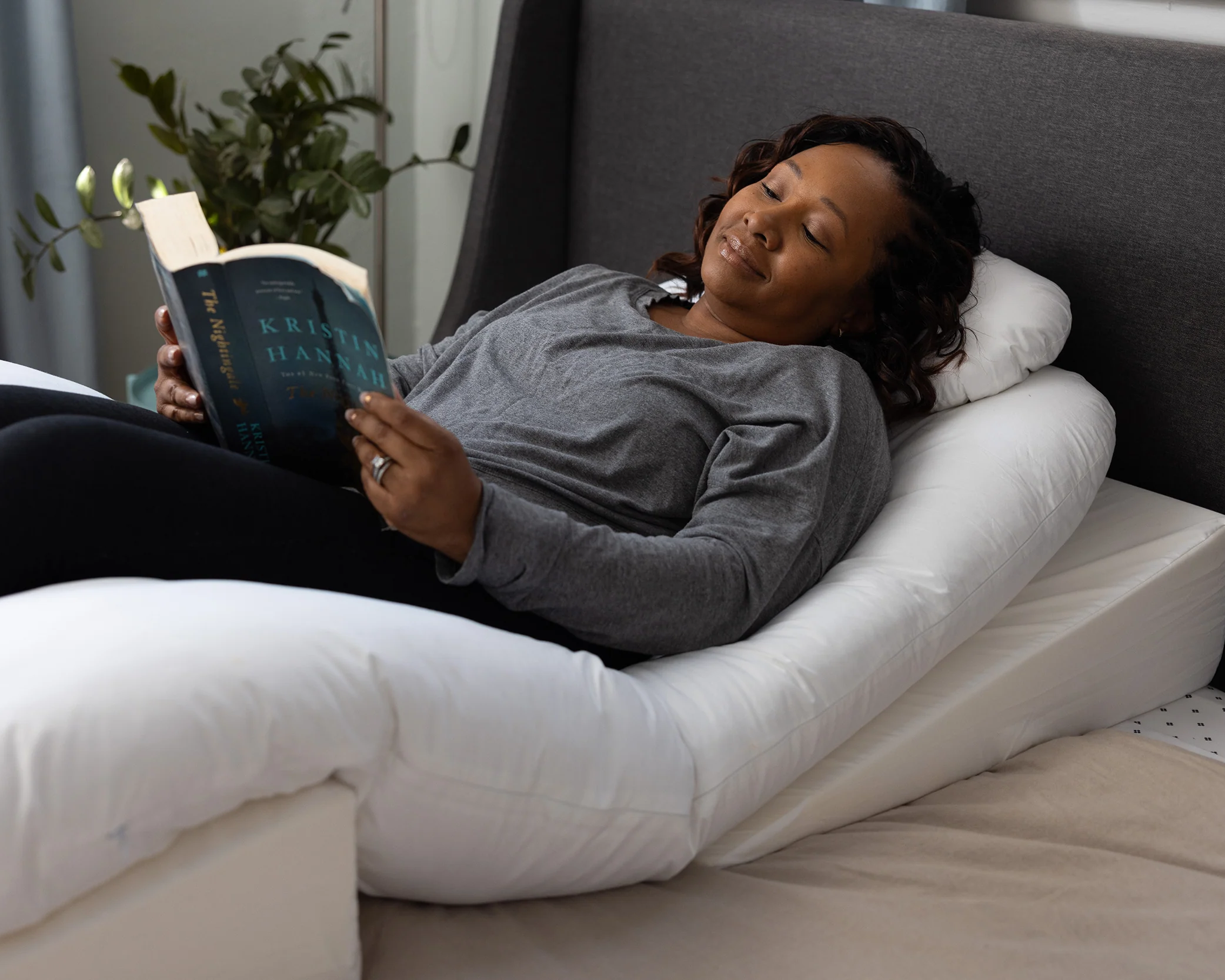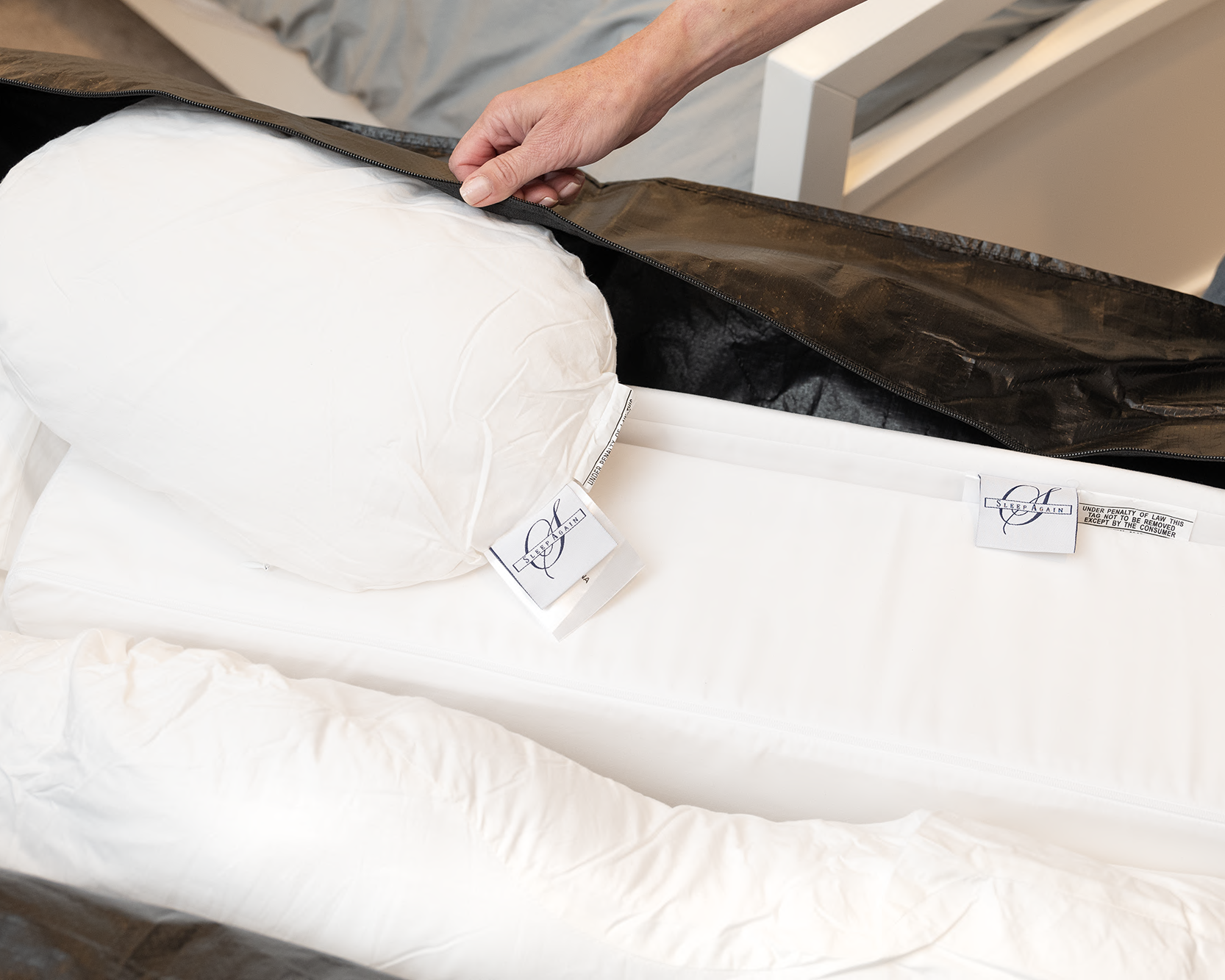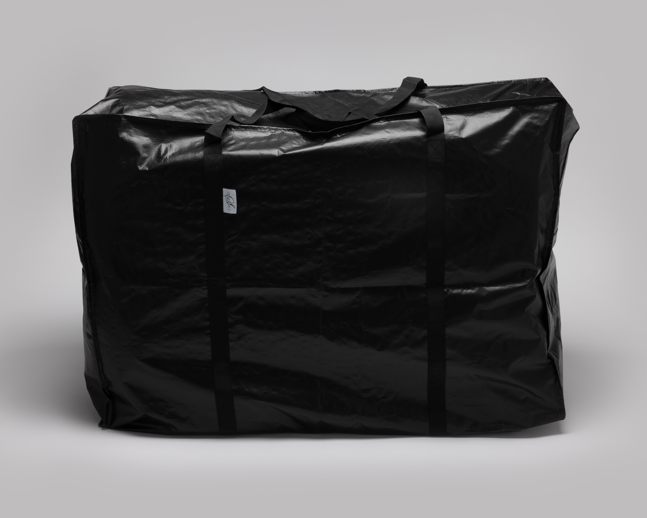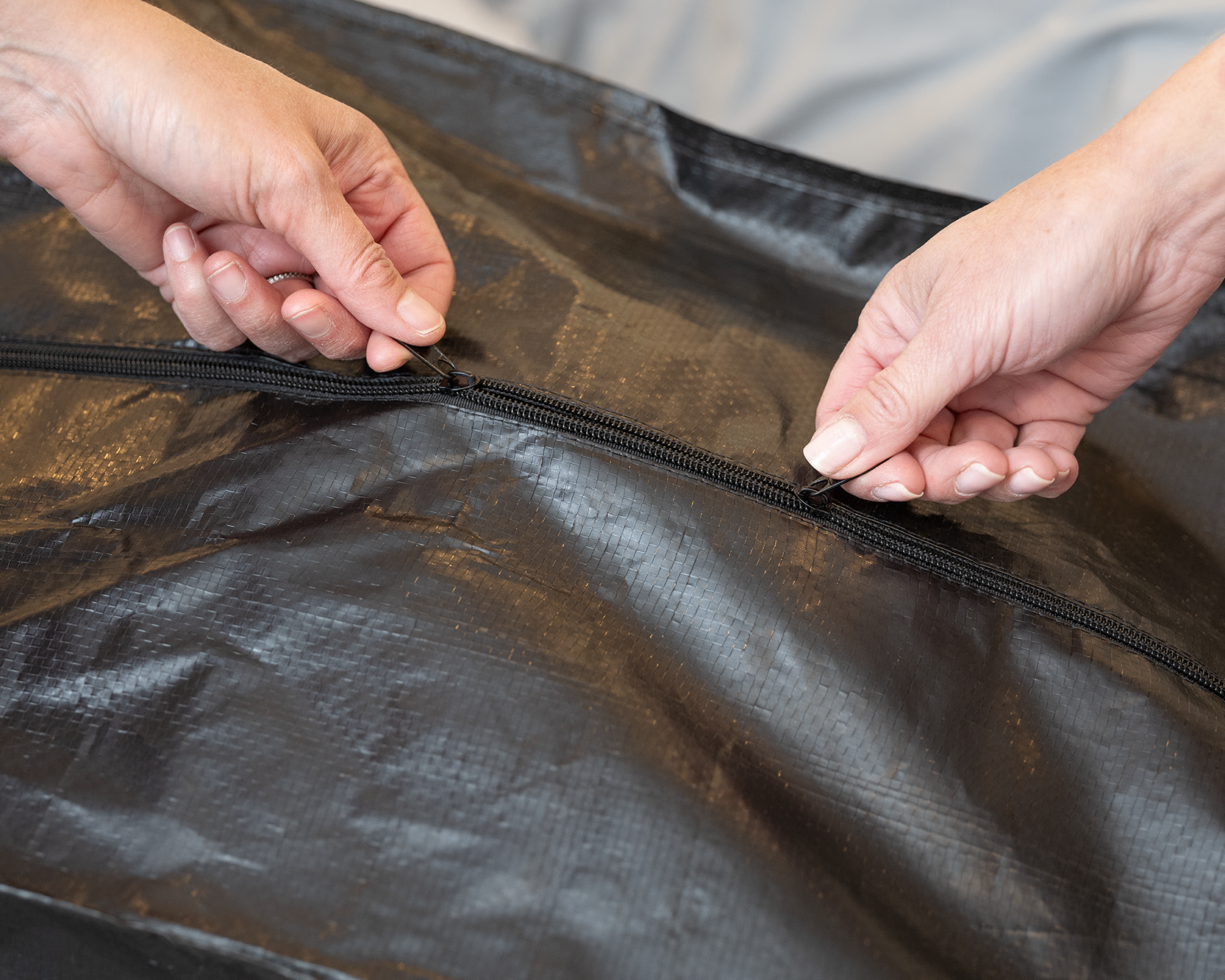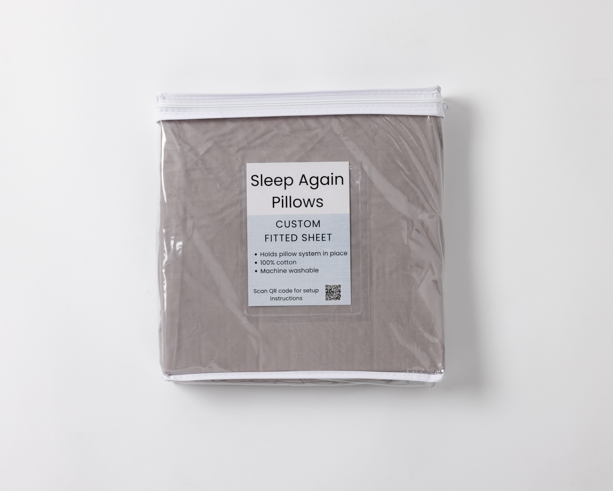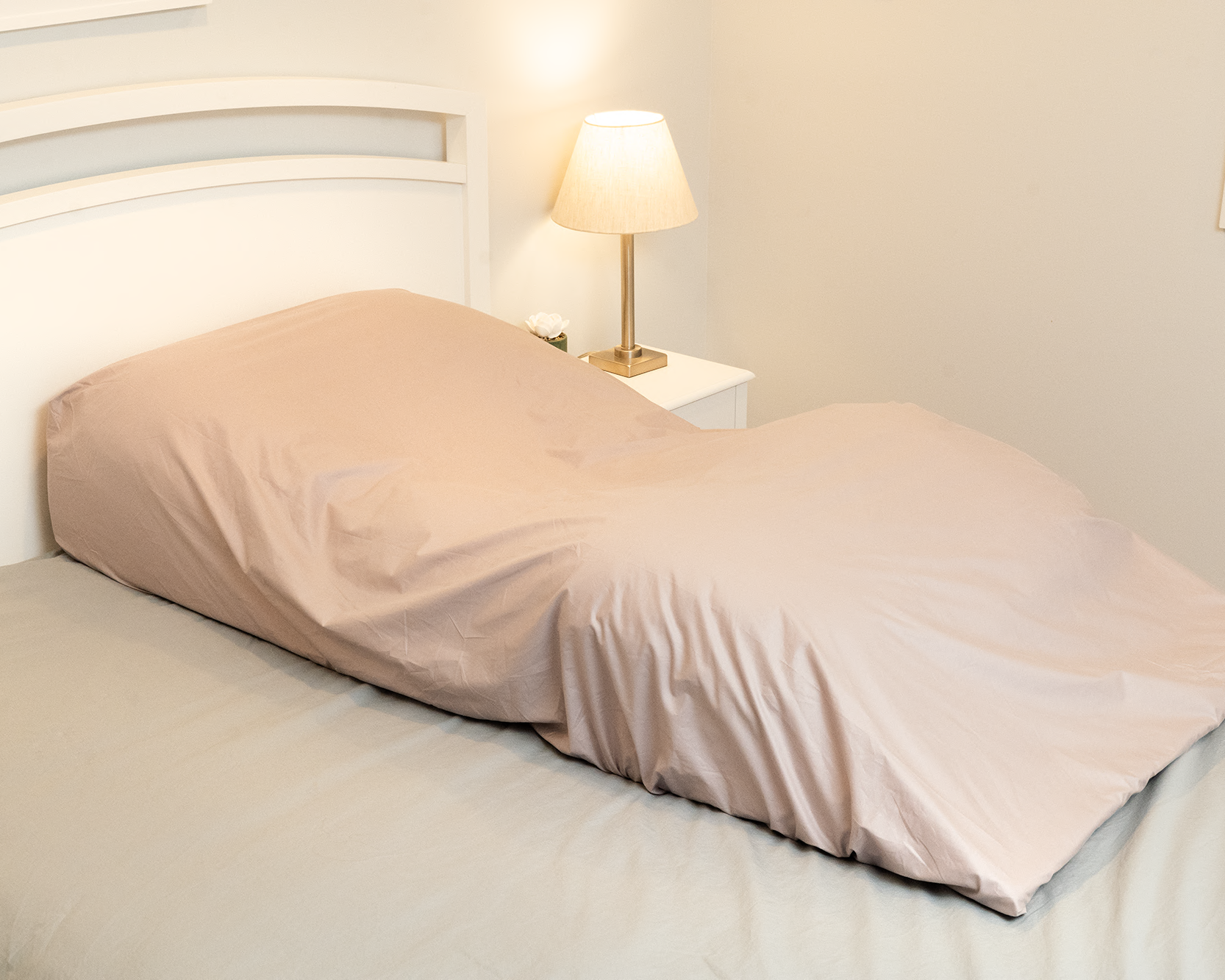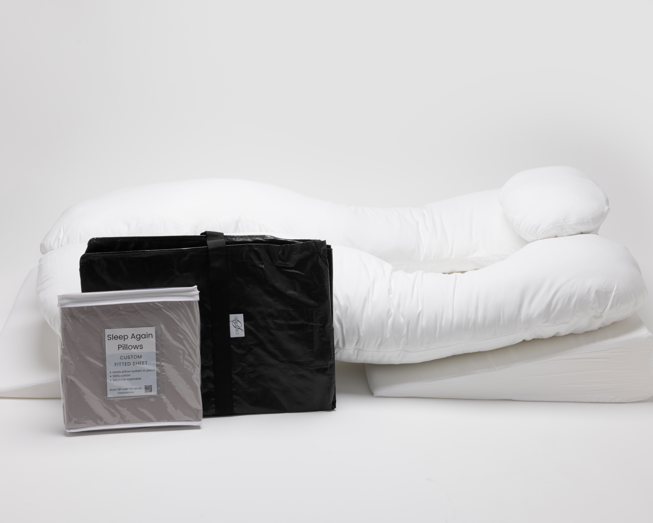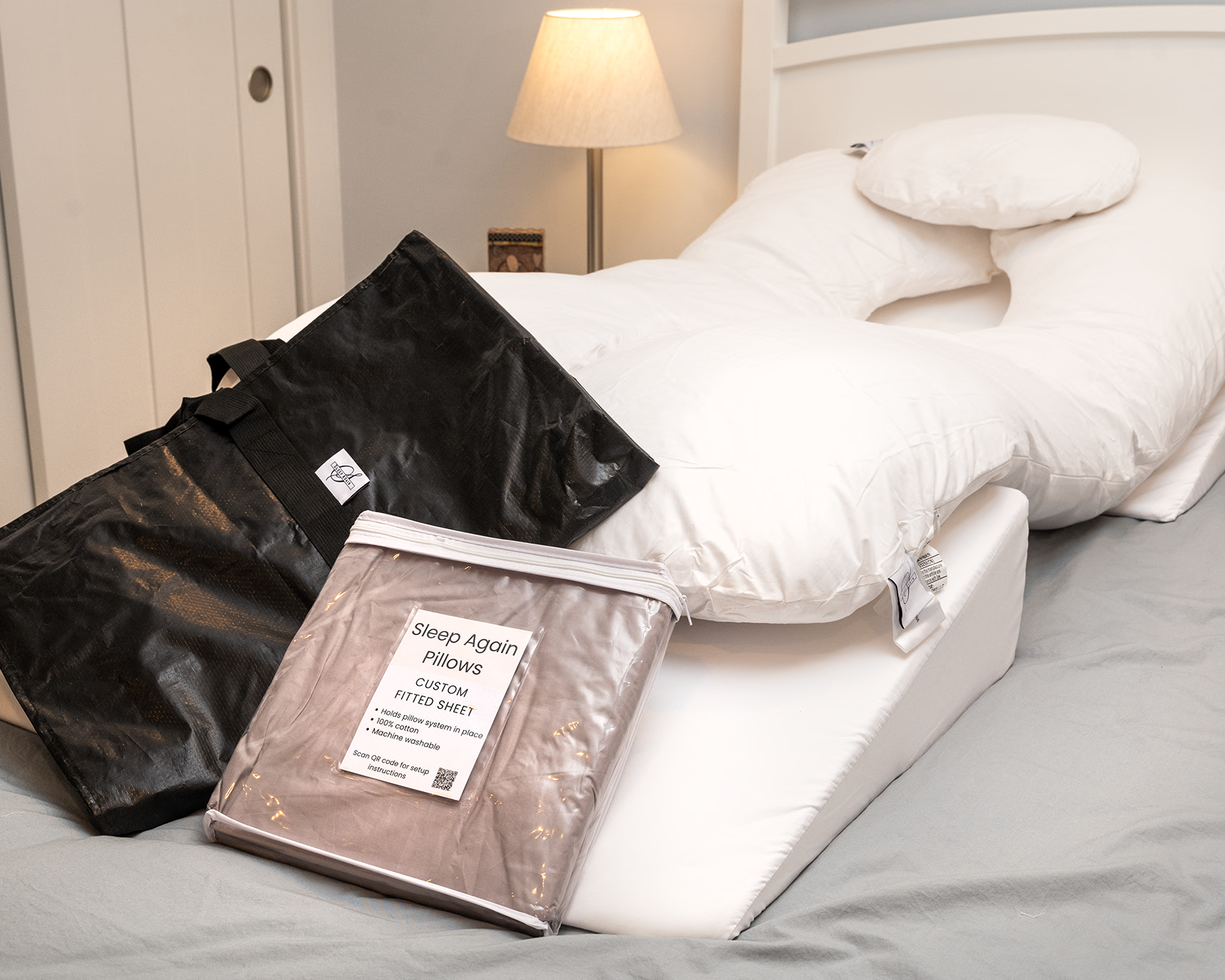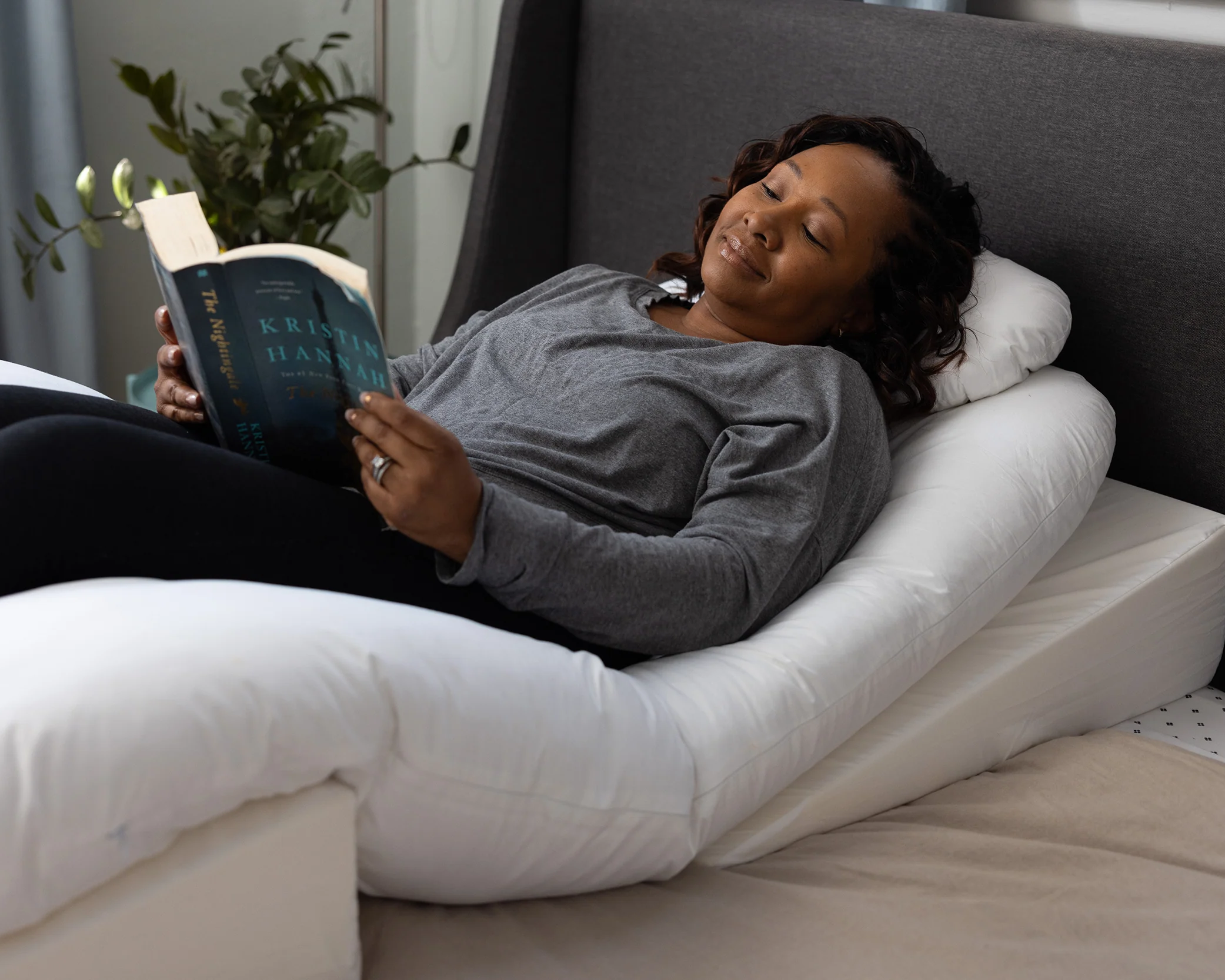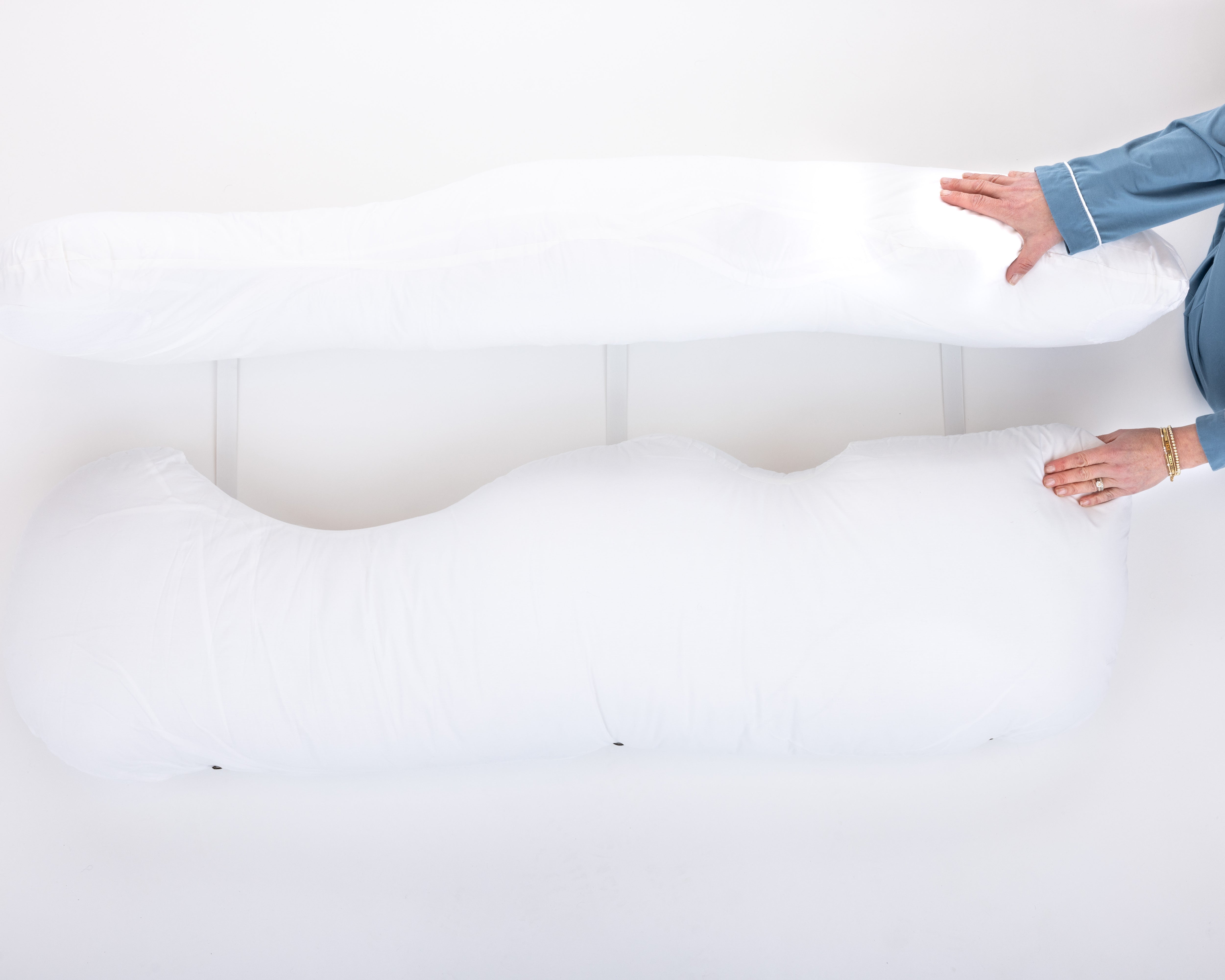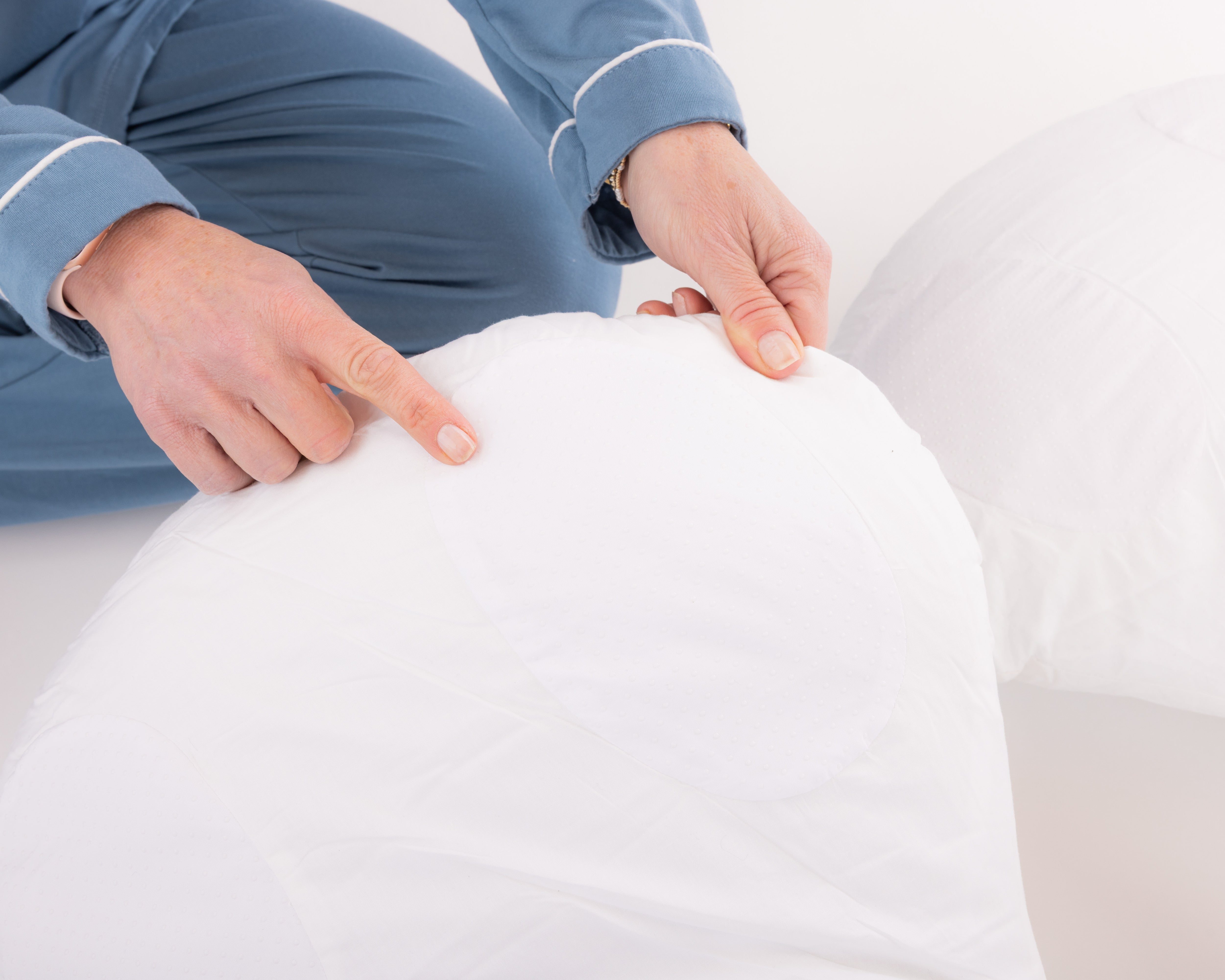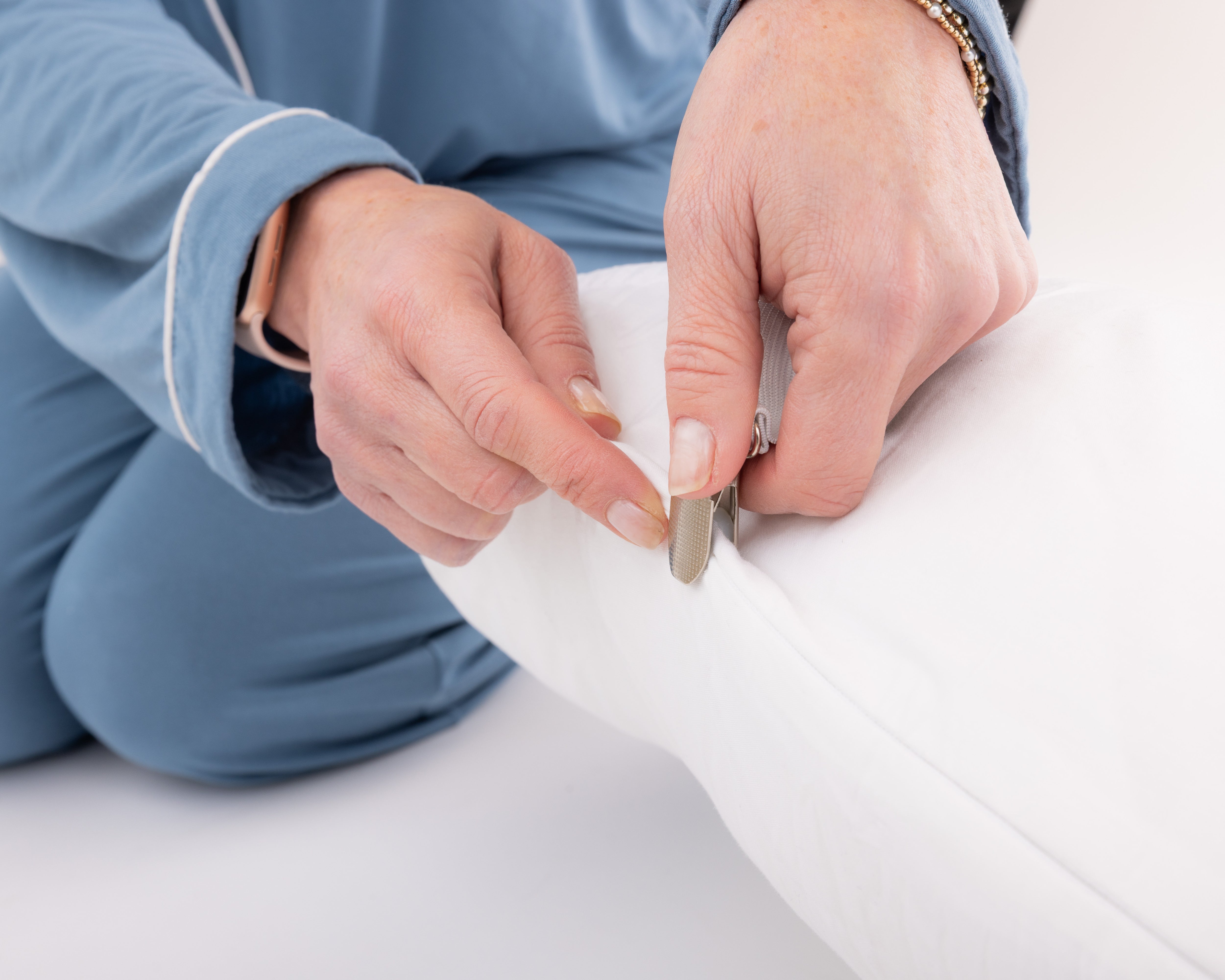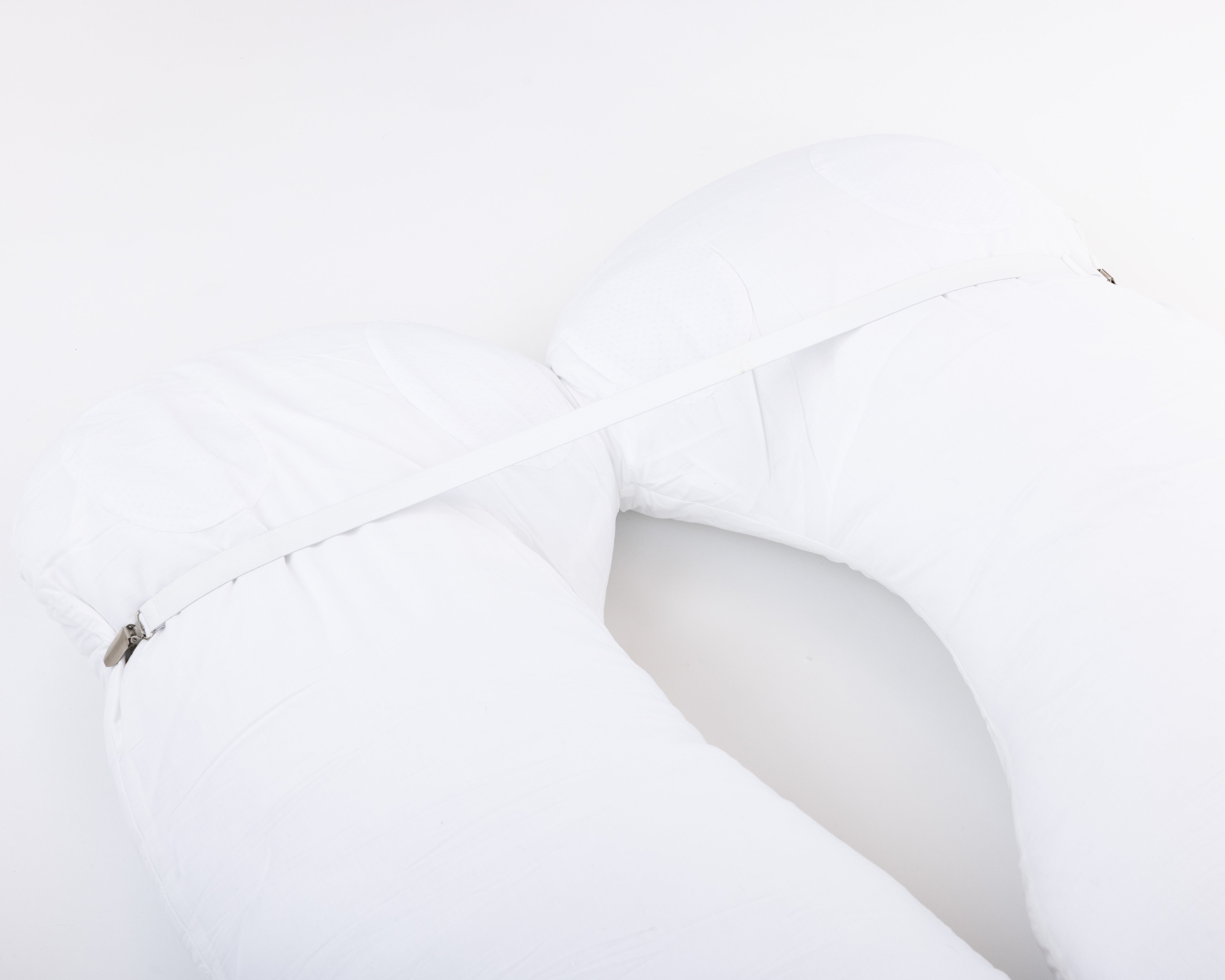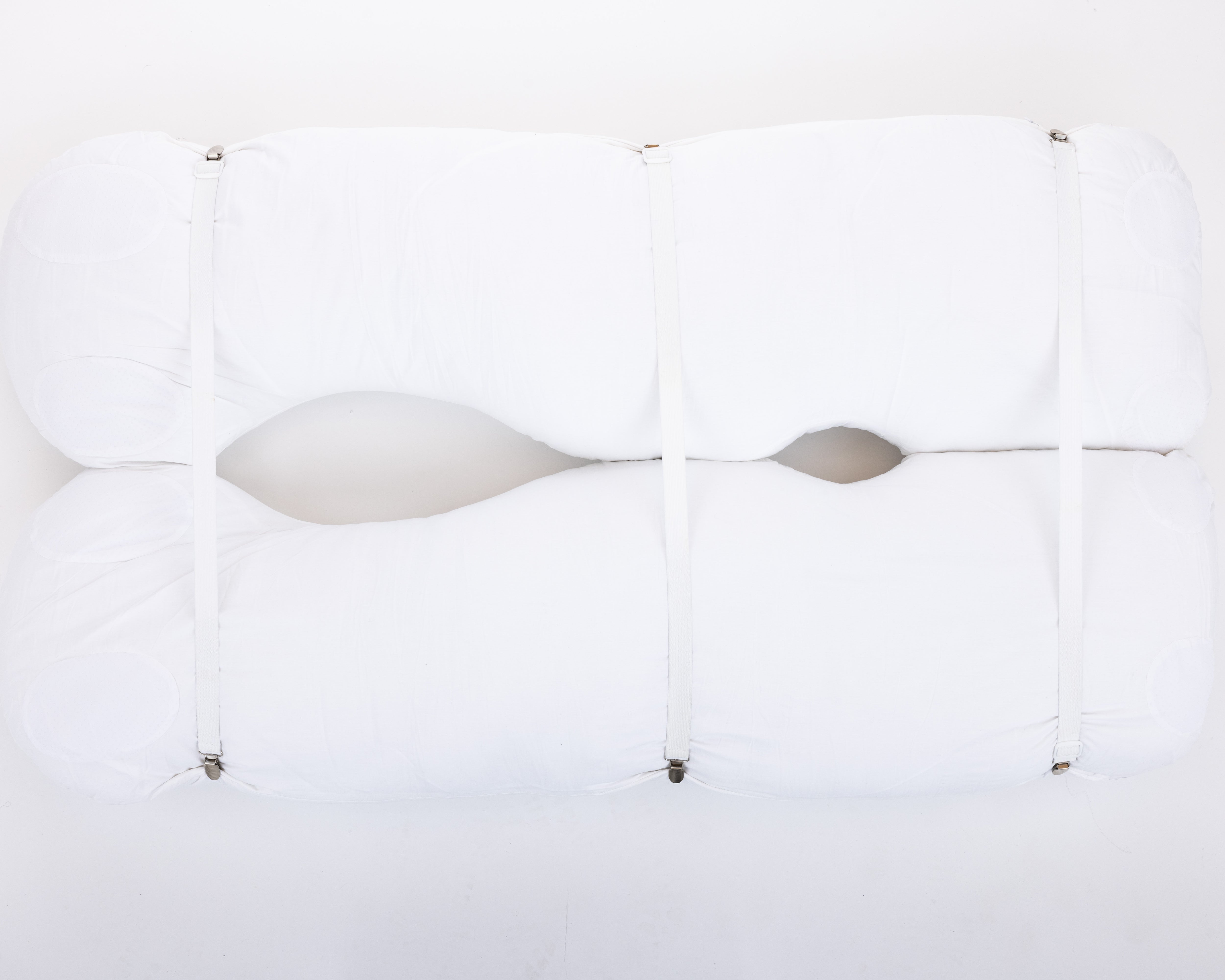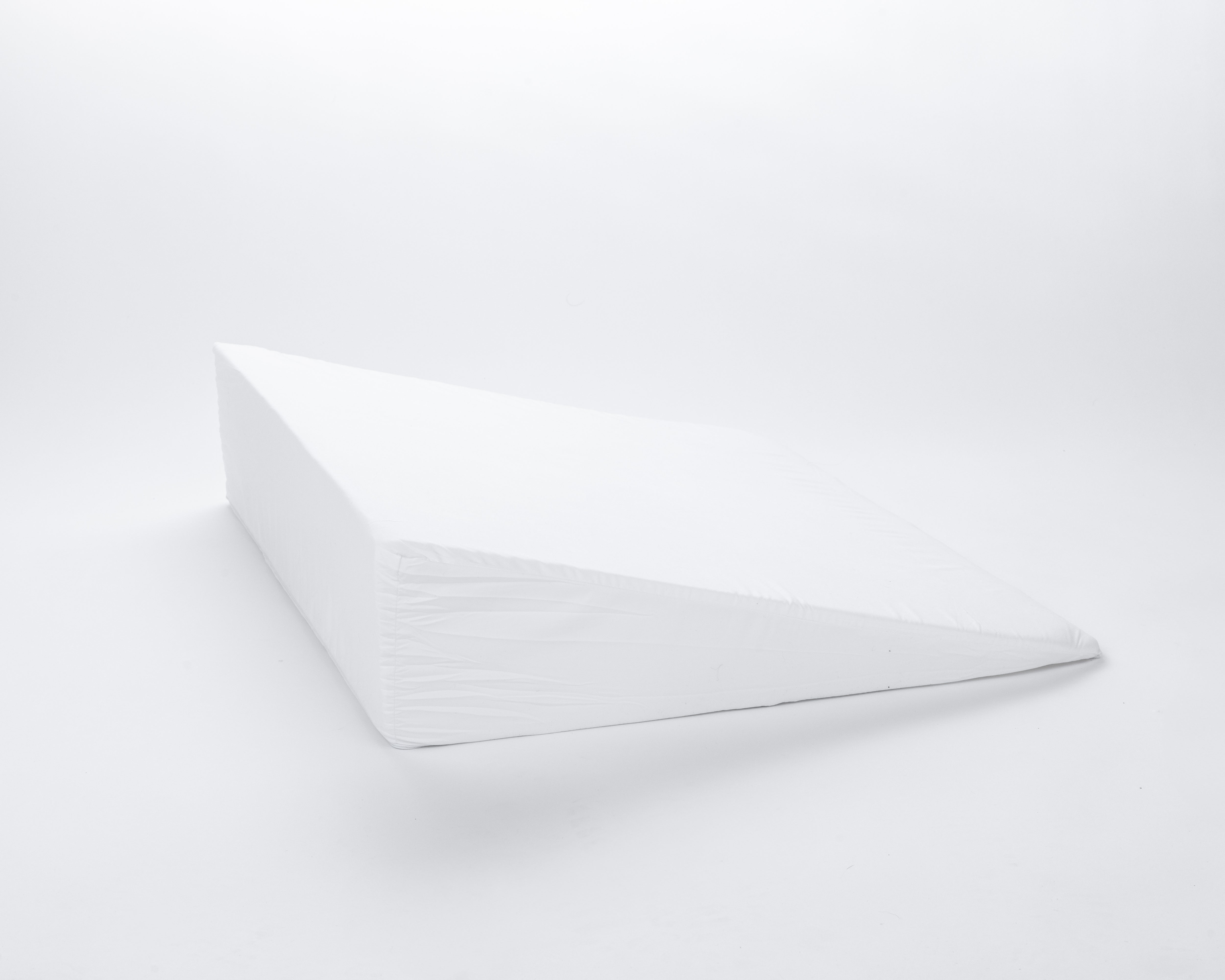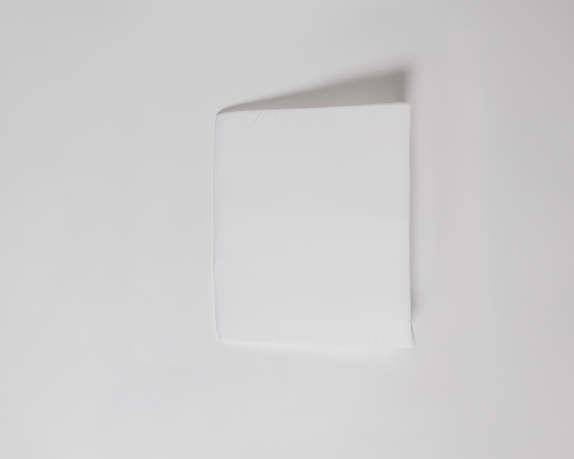You just performed a miracle—growing and delivering a human being. But here's what nobody tells you about C-section recovery: you're expected to heal from major abdominal surgery while simultaneously learning to care for a tiny, demanding human on virtually no sleep. It's like being asked to run a marathon while recovering from appendix surgery.
The truth is, C-section recovery sleep isn't just about healing from surgery—it's about healing while navigating the chaos of new motherhood. You're not just protecting an incision; you're figuring out how to feed a baby every 2-3 hours, manage postpartum bleeding, deal with engorged breasts, and somehow rest between the constant cycle of feeding, changing, and soothing.
This guide isn't about perfect sleep positions you'll find in medical textbooks. It's about real solutions for real moms who need to heal from surgery while caring for a newborn and helping them thrive.
The C-Section Sleep Reality Check: Why This Is Different
Let's be honest about what you're dealing with. This isn't just post-surgical recovery—this is post-surgical recovery with a plot twist that wakes up every two hours and needs you to function.
You're Healing While Working the Night Shift
Unlike other surgeries where you can rest and recover, you're now on call 24/7 for someone who can't communicate their needs beyond crying. Your body is trying to repair major abdominal surgery while your brain is learning an entirely new skill set under extreme sleep deprivation.
Your Body Is Doing Five Things at Once
Your uterus is shrinking back to size (hello, afterpains), your incision is healing, your hormones are on a rollercoaster that would make Six Flags jealous, you might be breastfeeding (which requires its own recovery process), and you're dealing with postpartum bleeding. All while trying to sleep between baby wake-ups.
Every Position Has Complications
-
Can't sleep on your stomach (incision)
-
Side sleeping is tricky with bleeding and breast tenderness
-
Back sleeping might be uncomfortable if you're breastfeeding
-
Getting up and down from bed needs to happen 6-8 times per night
-
You need positions that work for both sleeping AND feeding
This is why the standard "just elevate your upper body" advice falls short. You need a system that works for the reality of new motherhood.

The New Mom Sleep Strategy: Positions That Actually Work
The Nursing Nest: Your Multi-Purpose Sleep Setup
Since you'll be feeding your baby every 2-3 hours, your sleep position needs to double as a comfortable feeding position. This setup lets you nurse and rest without major position changes that stress your incision.
Creating Your Nursing Nest:
Set up a slight elevation (20-30 degrees—less than typical post-surgical advice) using pillows or a wedge. This angle is gentle enough for sleep but supportive enough for comfortable nursing.
Place a nursing pillow or firm bed pillow across your lap area. This pillow stays in position and brings baby to the right height for feeding without you having to hold their weight with your arms.
Keep a small pillow or rolled towel against your side for incision support. When baby latches, you can adjust this pillow to provide gentle support without pressure on the surgical site.
Position a pillow behind your back for support, ensuring you can relax completely between feeding sessions.
Why This Works:
This position protects your incision while allowing you to nurse comfortably. When baby falls asleep after feeding, you can gently transfer them back to their sleep space without major position changes that might wake them (or stress your healing body).
The Sleep Again Pillow System excels here because the Upper Body Wedge provides consistent, comfortable elevation that doesn't shift when you lean forward to latch baby or adjust their position during feeding.
The Side-Lying Sanctuary: For Exhausted Night Feeds
When you're too tired to sit up for feeds (and this will happen), side-lying nursing can be a lifesaver. But it requires specific setup to protect your incision and maintain comfort.
Setting Up Safe Side-Lying:
Choose the side that feels most comfortable with your incision (this varies by person). Place a firm pillow between your knees to maintain hip alignment and reduce strain on your healing abdominal muscles.
Position a small pillow or folded towel against your belly to support the incision area. This pillow should cradle your abdomen without putting pressure on the surgical site.
Use the Sleep Again Pillow System to prevent rolling onto your incision during sleep. These contoured pillows are specifically designed to cradle your back and hips while maintaining their shape throughout the night.
Create a "baby nest" in front of you with a receiving blanket or small pillow, making it easy to position baby for nursing without straining your arms or back.
The Side-Lying Advantage:
This position allows you to rest while baby nurses, potentially extending both of your sleep periods. It's also easier on your back and arms during those long cluster-feeding sessions that seem to happen at 3 AM.
The Recovery Recline: For When You Just Need to Sleep
Sometimes you need a position that's purely about your recovery, not about being ready to feed baby. This is your deep rest position for when your partner is handling baby duty or when baby is having a longer sleep stretch.
Optimal Recovery Setup:
Elevate your upper body 30-40 degrees using a quality wedge pillow. This elevation reduces pressure on your incision and improves breathing—both crucial for healing.
Place the leg support wedge from the Sleep Again Pillow System under your knees to maintain spinal alignment and reduce lower back pressure. This is especially important since your abdominal muscles aren't available to help support your spine.
Use the Head Pillow to ensure your neck is properly supported at the elevated angle, preventing the neck strain that can develop from sleeping semi-upright.
Position arms comfortably at your sides with support pillows if needed, ensuring no pressure points develop during longer sleep periods.
Managing the Midnight Feeding Marathon
The biggest challenge of C-section sleep isn't just getting comfortable—it's getting comfortable repeatedly throughout the night while caring for your baby.
The Strategic Bedside Setup
Essential Equipment Within Arm's Reach:
-
Water bottle (breastfeeding makes you incredibly thirsty)
-
Pain medication
-
Phone with dim night mode for timing feeds
-
Burp cloths and extra onesies
-
Postpartum pads for middle-of-night bathroom trips
-
Small snacks (your body needs fuel for healing and feeding)
Lighting Strategy: Install a dim, warm light source that provides enough visibility for safe baby care without fully waking either of you. A small bedside lamp with a red bulb or night light can help maintain sleepy atmospheres.
Partner Coordination: If you have a partner, establish a system where they handle diaper changes while you prepare for feeding. This division of labor minimizes how much you need to move and bend during night wakings.
The Efficient Transfer Technique
Getting in and out of bed efficiently becomes crucial when you're doing it multiple times per night.
Getting Up Safely: From any elevated position, roll to your side using your arms and legs rather than your core muscles. Use the "log roll" technique—move your whole body as one unit.
Sit up slowly, using your arms to push yourself up rather than doing a sit-up motion that strains your incision.
Stand up gradually, giving your body time to adjust to the position change.
Getting Back to Bed: Sit on the edge of the bed, then use your arms to lower yourself to your side. Roll carefully onto your back and reposition your pillow support system.
Having your pillows already arranged makes this process much smoother and reduces the time you're fully awake.

The Complete Sleep System for New Moms
The Sleep Again Pillow System addresses the unique challenges of recovering from C-section surgery while caring for a newborn.
Every Sleep Again Pillow System includes:
-
Two Contoured Side Pillows to cradle back and hips
-
Upper Body Wedge to create optimal upper body incline
-
Leg Support Wedge to gently elevate legs
-
Head Pillow to provide head support and neck mobility
-
Removable, washable slipcovers for every piece
These components work together to address the unique challenges of C-section recovery. The contoured side pillows maintain their shape throughout the night, providing consistent support whether you're sleeping in an elevated back sleeping position or nursing in a side-lying position. The upper body wedge creates optimal elevation for both recovery sleep and comfortable nursing positions, maintaining its supportive angle throughout multiple feeding sessions. The leg support wedge is especially important during C-section recovery when your abdominal muscles aren't available to support proper spinal alignment.
The system eliminates the nightly pillow arrangement ritual, giving you more time to rest between your baby's demands. Each piece works together to create multiple comfortable positions without requiring complete setup changes.
The Postpartum Sleep Reality: Beyond Just Your Incision
Managing Bleeding and Leaks: Heavy postpartum pads can make side sleeping uncomfortable, while milk leaks can disrupt your carefully arranged pillow system. Keep extra supplies bedside, use waterproof mattress protection, and consider disposable underwear for the first few weeks to minimize middle-of-night disruptions.
Breast Comfort: Whether you're breastfeeding or formula feeding, expect breast changes that affect sleep positioning. A supportive sleep bra and nursing pads can prevent painful shifting and leaks. Avoid putting pressure on engorged breasts when side-lying.
Hormonal Sleep Disruption: Your postpartum hormones don't care that you're exhausted. When your mind races during those 3 AM feeds, focus on rest rather than perfect sleep. Use feeding time for relaxation techniques, and accept that normal sleep cycles are temporarily off the table.
The Reality Timeline: What to Actually Expect
Days 1-7: Survival Mode
Your main goal is protecting your incision while figuring out feeding. Don't worry about perfect sleep—focus on rest when possible and pain management. The nursing nest position will likely be your go-to setup.
Days 8-14: Finding Your Rhythm
You'll start to understand your baby's patterns and can begin optimizing your sleep setup accordingly. The side-lying position might become more comfortable as initial swelling decreases.
Weeks 3-4: Expanding Options
As your incision heals, you'll have more position flexibility. You might start alternating between elevated back sleep and side-lying based on how you're feeling and what baby needs.
Weeks 5-6: Improved Comfort
Many women find significant improvement in sleep comfort during this period. You can often reduce elevation angles and sleep for longer stretches (when baby allows).
Weeks 7-8: New Normal
By this point, your incision should be well-healed, but you'll still be dealing with sleep deprivation from frequent night feedings. Your positioning needs become more about comfort and feeding efficiency than surgical protection.
Common C-Section Sleep Problems and Real Solutions
Q: I can't find a comfortable position for both sleeping and nursing. What should I do?
A: Set up your nursing nest with moderate elevation (20-30 degrees) that works for both activities. The Sleep Again Pillow System and its adjustable components let you modify the setup without rebuilding everything between feeds.
Q: Getting in and out of bed hurts my incision. How can I make this easier?
A: Use the log roll technique—move your whole body as one unit to your side, then push up with your arms rather than doing a sit-up motion. Keep your pillow system arranged so you can settle back into position quickly.
Q: My pillows keep shifting when I get up to feed the baby. Any solutions?
A: Regular pillows compress and move, especially when you're getting up frequently for night feeds. Quality positioning pillows maintain their shape and support throughout multiple position changes. Better yet, the Sleep Again Pillow System offers optional Pillow Straps to keep everything together.
Q: I keep waking up on my incision side and it hurts. How do I stop rolling?
A: Use side pillows behind your back as barriers to prevent unconscious rolling. The side pillows from the Sleep Again Pillow System are firm enough to stop you from rolling but comfortable enough to sleep against.
Q: Why is my incision pain worse at night?
A: Take pain medication 30-45 minutes before bed, and ensure your positioning isn't putting any strain on your abdominal area. Proper elevation and support can significantly reduce nighttime discomfort.
When to Worry: Red Flags During Recovery
Call your doctor immediately for:
-
Fever or signs of infection around your incision
-
Sudden increase in bleeding (soaking a pad in less than an hour)
-
Severe abdominal pain that doesn't respond to prescribed pain medication
-
Difficulty breathing or chest pain
-
Signs of postpartum depression that affect your ability to care for yourself or baby
Discuss with your healthcare provider:
-
Sleep problems that significantly worsen after the first week
-
Persistent pain that interferes with caring for your baby
-
Concerns about your emotional recovery and adjustment

Why New Moms Choose Sleep Again Over DIY Pillow Solutions
The DIY Pillow Reality: Most new moms start by grabbing random pillows from around the house, trying to create a comfortable setup for C-section recovery. The result? Fifteen minutes of pillow arranging each night, constant readjustment when pillows compress and shift, and frustration when you're getting up every 2-3 hours for feeds.
What Makes Sleep Again Different: The Sleep Again Pillow System was designed specifically for post-surgical recovery, not general comfort. Each component maintains its shape and positioning throughout multiple wake-ups, feeding sessions, and position changes—exactly what C-section moms need.
Setup Time Comparison:
-
DIY approach: 15-20 minutes arranging pillows each night
-
Sleep Again Pillow System: 2-3 minutes once you learn the setup
Middle-of-Night Adjustments:
-
DIY approach: 3-4 wake-ups for pillow readjustment that disrupts sleep
-
Sleep Again Pillow System: Maintains position throughout the night
Long-term Value: Many mothers continue using the system long after C-section recovery because they discover improved sleep quality. The investment often becomes a permanent improvement to family sleep health.
The Investment in Your Recovery (And Sanity)
Why Quality Sleep Support Matters More for New Moms:
Poor sleep during C-section recovery doesn't just affect you—it affects your ability to care for your baby safely and effectively. Sleep deprivation can impair judgment, worsen postpartum mood disorders, and slow your physical healing.
Quality sleep support becomes an investment in your entire family's wellbeing. When you're comfortable and resting well (within the constraints of newborn care), you're better equipped to handle the challenges of new parenthood.
Cost Comparison:
DIY Pillow Approach:
-
Initial cost: $150-250 for various pillows from different stores
-
Hidden costs: Time spent arranging pillows nightly, lost sleep from readjustments
-
Emotional toll: Frustration and tears when you can't get comfortable while baby cries
-
Results: Inconsistent support, trial and error frustration
-
After recovery: Most pillows unused, taking up storage space
-
Complete system: One integrated solution designed for post-surgical recovery
-
Time savings: Consistent setup, maintained positioning throughout night
-
Results: Proven effectiveness for C-section patients
-
After recovery: Continued use for improved sleep quality
The Real Cost of Poor Positioning:
Inadequate sleep support during C-section recovery often leads to:
-
Extended healing time requiring more doctor visits
-
Increased pain medication needs
-
Higher risk of developing chronic pain patterns
-
Greater difficulty with breastfeeding establishment
-
Increased risk of postpartum depression and anxiety
Your New Mom Sleep Survival Plan
Week 1: Focus on the Basics
Set up your nursing nest and focus on protecting your incision. Don't worry about optimizing everything—just get through each night safely.
Week 2: Refine Your System
Start paying attention to what positions work best for you and baby. Make adjustments based on your first week's experience.
Week 3: Expand Your Options
Begin experimenting with side-lying positions while maintaining your elevated back setup as the primary option.
Month 2 and Beyond: Adapt as Needed
Your positioning needs will change as baby's feeding patterns evolve and your body heals. Stay flexible and adjust your setup accordingly.
The Truth About C-Section Recovery Sleep
Here's what you need to know: it gets easier, but it takes time. The combination of surgical recovery and newborn care is genuinely challenging, and you're not failing if you're struggling to sleep comfortably.
Your body just performed an incredible feat, and it deserves the best possible conditions for healing. Investing in proper sleep support during this crucial period isn't just about comfort—it's about giving yourself the foundation you need to be the best mother you can be.
Most importantly, be patient with yourself. This phase is temporary, even though it might feel endless at 3 AM when you're trying to find a comfortable position while your baby cluster feeds.
You're doing an amazing job, even when it doesn't feel like it. Rest when you can, sleep when possible, and remember that taking care of yourself is part of taking care of your baby.
Medical Disclaimer
This information is provided for educational purposes only and should not replace professional medical advice. Every C-section procedure and recovery process is unique, and recommendations may vary based on your specific surgery, postpartum healing, and individual circumstances. Always follow your obstetrician's and surgeon's specific post-operative instructions regarding positioning, activity restrictions, and recovery protocols. If you experience concerning symptoms such as signs of infection, excessive bleeding, severe pain, or postpartum depression symptoms, contact your healthcare provider immediately. The mention of specific products is for informational purposes only and does not constitute medical endorsement.


